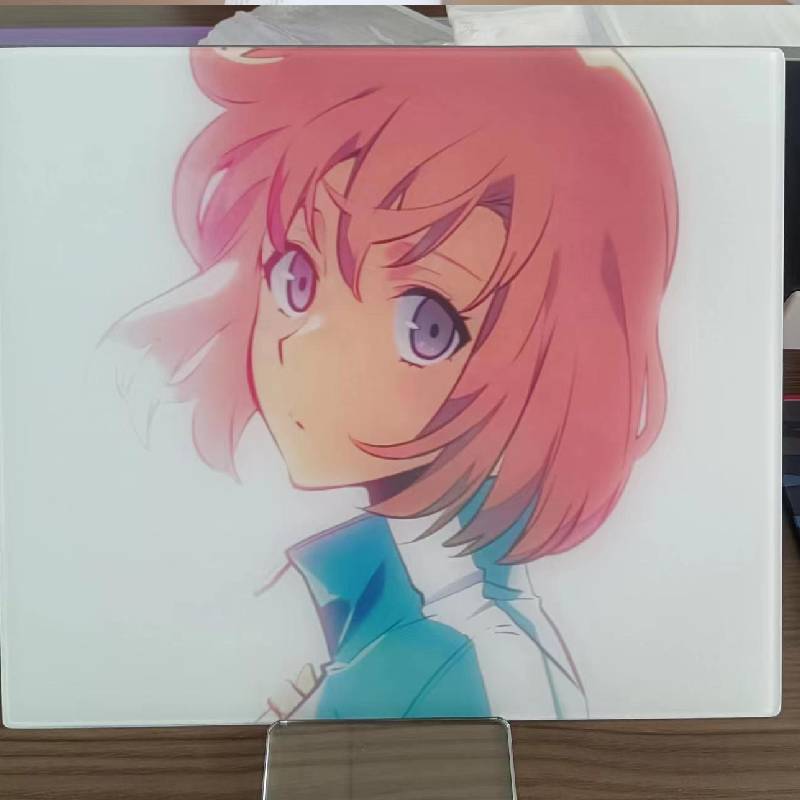The Art and Precision of Mirror Cutting
Mirror cutting is an exquisite craft that combines artistic vision with precise engineering. It involves the manipulation and shaping of glass to create reflective surfaces that are not just functional but also aesthetically pleasing. As a practice, mirror cutting has evolved significantly over the years, blending traditional techniques with modern technology to produce stunning results.
Historically, mirrors were made from polished metals or glass coated with silver or mercury, but the advent of modern glass manufacturing revolutionized the field. Today, glass mirrors are predominantly used in residential, commercial, and artistic applications. The process begins with selecting the right type of glass, with quality being a crucial determinant of the final product. Clear float glass is most commonly used due to its excellent optical clarity.
Once the glass is selected, the initial step in mirror cutting involves measuring and marking the desired dimensions
. Precision is paramount; even a slight miscalculation can lead to noticeable defects. Specialized tools such as glass cutters with tungsten carbide wheels are used to score the glass, creating a path that can be easily snapped apart. This requires a steady hand and an experienced eye, as the goal is to achieve clean, sharp edges.
After the glass has been cut into the desired shapes, it undergoes a polishing process. Polishing is vital as it not only enhances the shine of the mirror surface but also ensures that the edges are smooth and safe to handle. This step often involves using abrasive pads and compounds that gradually refine the surface, achieving a glimmering finish that enhances the mirror’s reflective qualities.
mirror cutting
Next comes the application of a reflective coating. This is typically done by applying a layer of silver or aluminum to the back of the glass. The choice between silver and aluminum often depends on the intended use and desired aesthetic. Silver mirrors tend to offer a warmer, more vibrant reflection, while aluminum provides a cooler, more modern look. The reflective surface must be applied evenly to avoid dark spots or inconsistencies that can detract from the mirror's functionality.
In recent years, the integration of technology in mirror cutting has brought about innovations that enhance both efficiency and creativity. CNC (Computer Numerical Control) machines and laser cutters allow for highly intricate designs that would be nearly impossible to achieve by hand. With these tools, artisans can produce customized mirrors with elaborate patterns, shapes, and even embedded lighting features, opening up a realm of possibilities for interior design.
The applications of mirror cutting are expansive. Beyond simple reflections, designers utilize mirrors to create illusions of space, enhance lighting, or serve as focal points in a room. Mirrors can be found adorning walls, furniture, and even artwork, reflecting not just the physical surroundings but also the personalities of the individuals who inhabit the space.
In conclusion, mirror cutting is a harmonious blend of art and science. It requires skill, precision, and an artistic touch to transform a simple piece of glass into a stunning mirror that adds value and beauty to any environment. Whether used in everyday life or as a form of artistic expression, the craft of mirror cutting continues to evolve, reflecting the creativity and ingenuity of those who practice it. As technology advances, the future of mirror cutting promises even more exciting developments, enhancing our interaction with this timeless medium.
 Afrikaans
Afrikaans  Albanian
Albanian  Amharic
Amharic  Arabic
Arabic  Armenian
Armenian  Azerbaijani
Azerbaijani  Basque
Basque  Belarusian
Belarusian  Bengali
Bengali  Bosnian
Bosnian  Bulgarian
Bulgarian  Catalan
Catalan  Cebuano
Cebuano  Corsican
Corsican  Croatian
Croatian  Czech
Czech  Danish
Danish  Dutch
Dutch  English
English  Esperanto
Esperanto  Estonian
Estonian  Finnish
Finnish  French
French  Frisian
Frisian  Galician
Galician  Georgian
Georgian  German
German  Greek
Greek  Gujarati
Gujarati  Haitian Creole
Haitian Creole  hausa
hausa  hawaiian
hawaiian  Hebrew
Hebrew  Hindi
Hindi  Miao
Miao  Hungarian
Hungarian  Icelandic
Icelandic  igbo
igbo  Indonesian
Indonesian  irish
irish  Italian
Italian  Japanese
Japanese  Javanese
Javanese  Kannada
Kannada  kazakh
kazakh  Khmer
Khmer  Rwandese
Rwandese  Korean
Korean  Kurdish
Kurdish  Kyrgyz
Kyrgyz  Lao
Lao  Latin
Latin  Latvian
Latvian  Lithuanian
Lithuanian  Luxembourgish
Luxembourgish  Macedonian
Macedonian  Malgashi
Malgashi  Malay
Malay  Malayalam
Malayalam  Maltese
Maltese  Maori
Maori  Marathi
Marathi  Mongolian
Mongolian  Myanmar
Myanmar  Nepali
Nepali  Norwegian
Norwegian  Norwegian
Norwegian  Occitan
Occitan  Pashto
Pashto  Persian
Persian  Polish
Polish  Portuguese
Portuguese  Punjabi
Punjabi  Romanian
Romanian  Russian
Russian  Samoan
Samoan  Scottish Gaelic
Scottish Gaelic  Serbian
Serbian  Sesotho
Sesotho  Shona
Shona  Sindhi
Sindhi  Sinhala
Sinhala  Slovak
Slovak  Slovenian
Slovenian  Somali
Somali  Spanish
Spanish  Sundanese
Sundanese  Swahili
Swahili  Swedish
Swedish  Tagalog
Tagalog  Tajik
Tajik  Tamil
Tamil  Tatar
Tatar  Telugu
Telugu  Thai
Thai  Turkish
Turkish  Turkmen
Turkmen  Ukrainian
Ukrainian  Urdu
Urdu  Uighur
Uighur  Uzbek
Uzbek  Vietnamese
Vietnamese  Welsh
Welsh  Bantu
Bantu  Yiddish
Yiddish  Yoruba
Yoruba  Zulu
Zulu 

